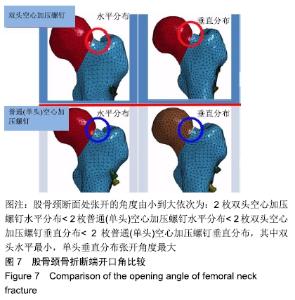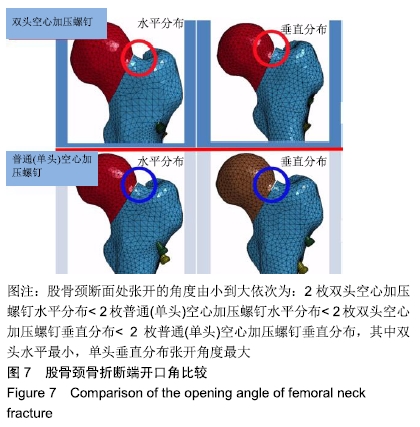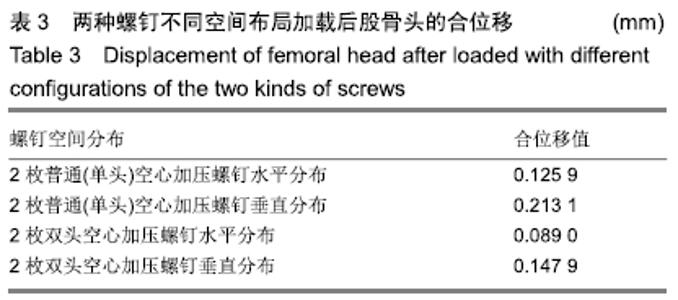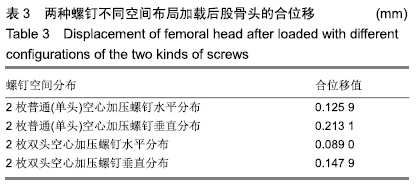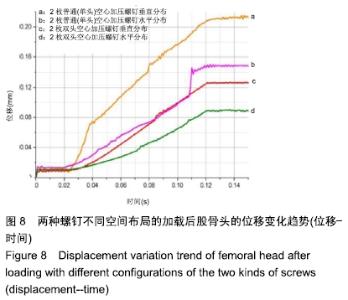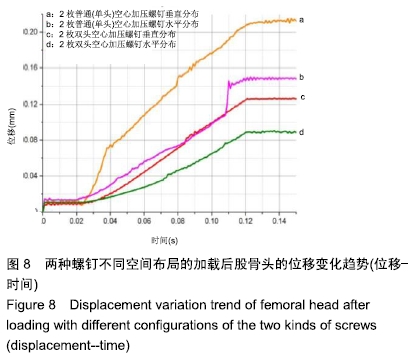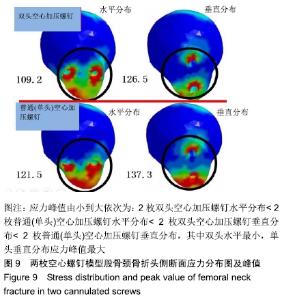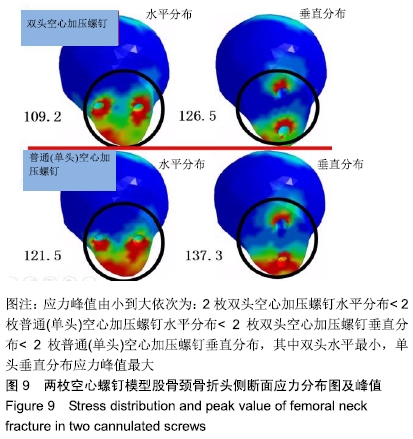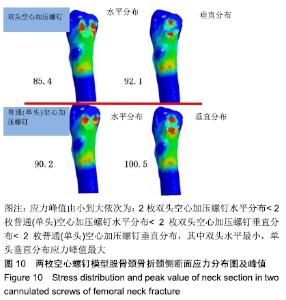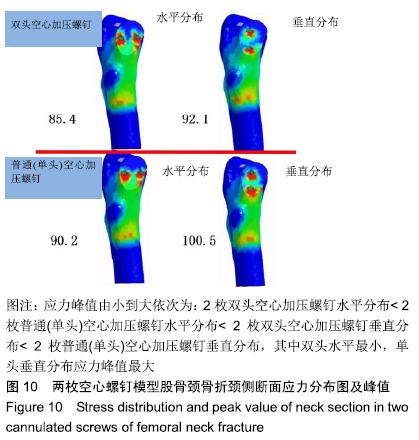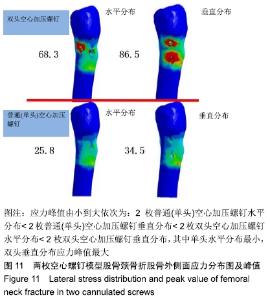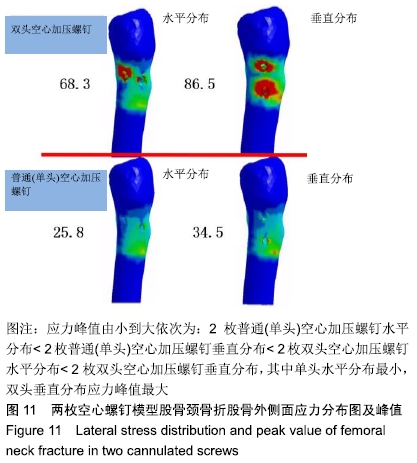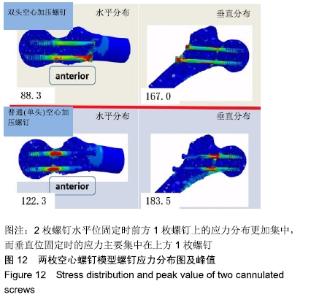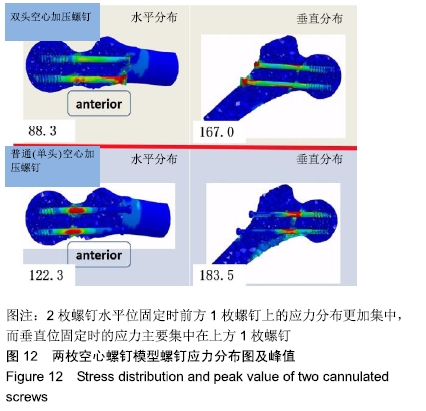| [1] |
Xu Feng, Kang Hui, Wei Tanjun, Xi Jintao.
Biomechanical analysis of different fixation methods of pedicle screws for thoracolumbar fracture
[J]. Chinese Journal of Tissue Engineering Research, 2021, 25(9): 1313-1317.
|
| [2] |
Zhang Tongtong, Wang Zhonghua, Wen Jie, Song Yuxin, Liu Lin.
Application of three-dimensional printing model in surgical resection and reconstruction of cervical tumor
[J]. Chinese Journal of Tissue Engineering Research, 2021, 25(9): 1335-1339.
|
| [3] |
Chen Xinmin, Li Wenbiao, Xiong Kaikai, Xiong Xiaoyan, Zheng Liqin, Li Musheng, Zheng Yongze, Lin Ziling.
Type A3.3 femoral intertrochanteric fracture with augmented proximal femoral nail anti-rotation in the elderly: finite element analysis of the optimal amount of bone cement
[J]. Chinese Journal of Tissue Engineering Research, 2021, 25(9): 1404-1409.
|
| [4] |
Du Xiupeng, Yang Zhaohui.
Effect of degree of initial deformity of impacted femoral neck fractures under 65 years of age on femoral neck shortening
[J]. Chinese Journal of Tissue Engineering Research, 2021, 25(9): 1410-1416.
|
| [5] |
Zhang Shangpu, Ju Xiaodong, Song Hengyi, Dong Zhi, Wang Chen, Sun Guodong.
Arthroscopic suture bridge technique with suture anchor in the treatment of acromioclavicular dislocation
[J]. Chinese Journal of Tissue Engineering Research, 2021, 25(9): 1417-1422.
|
| [6] |
Zhou Jihui, Li Xinzhi, Zhou You, Huang Wei, Chen Wenyao.
Multiple problems in the selection of implants for patellar fracture
[J]. Chinese Journal of Tissue Engineering Research, 2021, 25(9): 1440-1445.
|
| [7] |
Chen Junming, Yue Chen, He Peilin, Zhang Juntao, Sun Moyuan, Liu Youwen.
Hip arthroplasty versus proximal femoral nail antirotation for intertrochanteric fractures in older adults: a meta-analysis
[J]. Chinese Journal of Tissue Engineering Research, 2021, 25(9): 1452-1457.
|
| [8] |
Hu Kai, Qiao Xiaohong, Zhang Yonghong, Wang Dong, Qin Sihe.
Treatment of displaced intra-articular calcaneal fractures with cannulated screws and plates: a meta-analysis of 15 randomized controlled trials
[J]. Chinese Journal of Tissue Engineering Research, 2021, 25(9): 1465-1470.
|
| [9] |
Xu Yulin, Shen Shi, Zhuo Naiqiang, Yang Huilin, Yang Chao, Li Yang, Zhao Heng, Zhao Lu.
Biomechanical comparison of three different plate fixation methods for acetabular posterior column fractures in standing and sitting positions
[J]. Chinese Journal of Tissue Engineering Research, 2021, 25(6): 826-830.
|
| [10] |
Cai Qunbin, Zou Xia, Hu Jiantao, Chen Xinmin, Zheng Liqin, Huang Peizhen, Lin Ziling, Jiang Ziwei.
Relationship between tip-apex distance and stability of intertrochanteric femoral fractures with proximal femoral anti-rotation nail: a finite element analysis
[J]. Chinese Journal of Tissue Engineering Research, 2021, 25(6): 831-836.
|
| [11] |
Hou Guangyuan, Zhang Jixue, Zhang Zhijun, Meng Xianghui, Duan Wen, Gao Weilu.
Bone cement pedicle screw fixation and fusion in the treatment of degenerative spinal disease with osteoporosis: one-year follow-up
[J]. Chinese Journal of Tissue Engineering Research, 2021, 25(6): 878-883.
|
| [12] |
He Li, Tian Wei, Xu Song, Zhao Xiaoyu, Miao Jun, Jia Jian.
Factors influencing the efficacy of lumbopelvic internal fixation in the treatment of traumatic spinopelvic dissociation
[J]. Chinese Journal of Tissue Engineering Research, 2021, 25(6): 884-889.
|
| [13] |
Yang Weiqiang, Ding Tong, Yang Weike, Jiang Zhengang.
Combined variable stress plate internal fixation affects changes of bone histiocyte function and bone mineral density at the fractured end of goat femur
[J]. Chinese Journal of Tissue Engineering Research, 2021, 25(6): 890-894.
|
| [14] |
Zhang Lei, Ma Li, Fu Shijie, Zhou Xin, Yu Lin, Guo Xiaoguang.
Arthroscopic treatment of greater tuberosity avulsion fractures with anterior shoulder dislocation using the double-row suture anchor technique
[J]. Chinese Journal of Tissue Engineering Research, 2021, 25(6): 895-900.
|
| [15] |
Yuan Xinping, Shao Yanbo, Wu Chao, Wang Jianling, Tong Liangcheng, Li Ying.
Accuracy of target bone segments in personalized differential modeling and simulation of CT scanning parameters at fracture end
[J]. Chinese Journal of Tissue Engineering Research, 2021, 25(6): 912-916.
|
